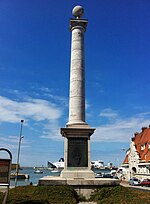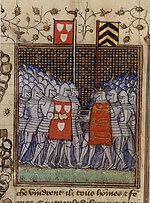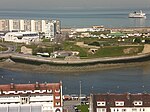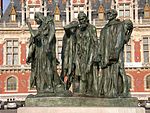Tour du Guet
1210s in France1214 in EuropeBrick GothicBuildings and structures completed in 1214Buildings and structures in Calais ... and 5 more
Gothic architecture in FranceMonuments and memorials in the Pas-de-CalaisMonuments historiques of Pas-de-CalaisTowers completed in the 13th centuryTowers in France

The Tour du Guet is a 13th-century watchtower in Calais, Pas-de-Calais, northern France. Located on Place d'Armes behind the Hotel de Ville, it is 39 metres (128 ft) in height, and features a dovecote for carrier pigeons. The tower dates from 1214, when Philip I, Count of Boulogne built fortifications in the town. Damaged by a 1580 earthquake, it was used as a lighthouse until 1848, when it became a watch tower. During World War I, it served as a military post.
Excerpt from the Wikipedia article Tour du Guet (License: CC BY-SA 3.0, Authors, Images).Tour du Guet
Place d'Armes, Calais
Geographical coordinates (GPS) Address Nearby Places Show on map
Geographical coordinates (GPS)
| Latitude | Longitude |
|---|---|
| N 50.95889 ° | E 1.84972 ° |
Address
Place d'Armes
Place d'Armes
62100 Calais
Hauts-de-France, France
Open on Google Maps










